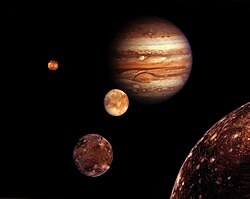toobfreak
Tungsten/Glass Member
A friend of mine in South Florida (Pembroke Pines north of Miami) whom I gave early training to as an astrophotographer (over the internet on a group I run) just sent me his latest image of the planet Jupiter I thought I might share with those interested here.
His original file was a TIFF which I converted to exif-JPEG to reduce file size small enough for showing here and did a little additional clean-up reprocessing to.
Image was taken with a Celestron 11 SCT (folded mirror/lens) telescope. The four images are the individual LRGB channels and the resulting composite color image (the other three combined):

His original file was a TIFF which I converted to exif-JPEG to reduce file size small enough for showing here and did a little additional clean-up reprocessing to.
Image was taken with a Celestron 11 SCT (folded mirror/lens) telescope. The four images are the individual LRGB channels and the resulting composite color image (the other three combined):



